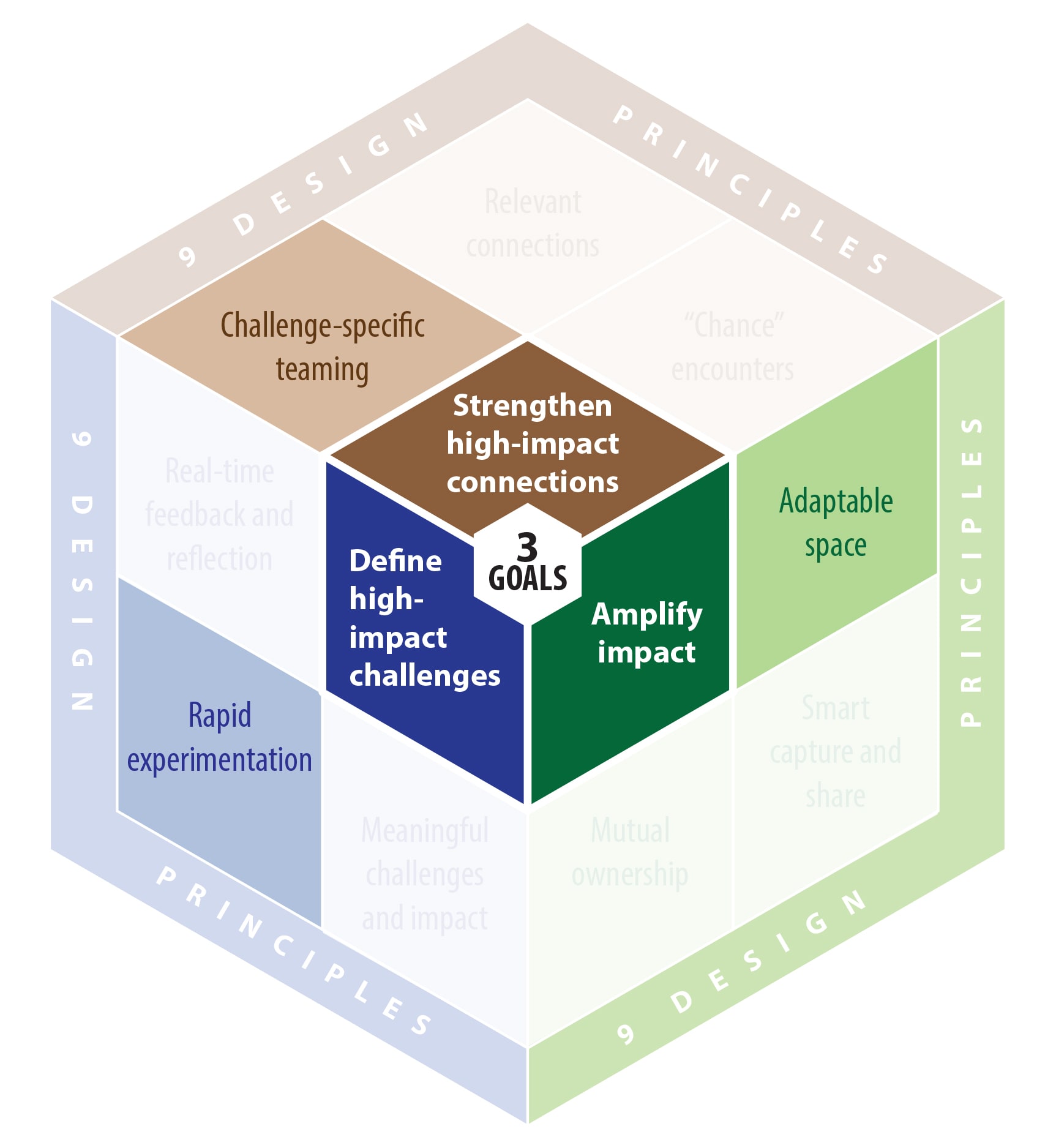W. L. Gore has been saved

W. L. Gore A case study in work environment redesign
20 June 2013
- Neil Tambe
The maker of Gore-Tex fabrics embraces fluid teaming and “dabble time” as ways to spur productivity and encourage innovation.
Can the way the workplace is constructed—physically, virtually, and managerially—affect employee performance? The Deloitte LLP Center for the Edge report Work environment redesign, based on a study of more than 75 organizations, argues that the work environment can have a critical impact on employee productivity, passion, and innovation. The study outlines nine design principles that can help employers gain more value from their people.
This case study explores ways that manufacturer W. L. Gore & Associates is applying these design principles to enhance its own corporate environment.
Figure 1. Work environment design principles used at W. L. Gore
Company background and results
W. L. Gore & Associates is a US-based manufacturer that specializes in making products that utilize advanced materials. Its best-known product is Gore-Tex fabrics. The company, founded in 1958 by Bill Gore, has grown to over 10,000 employees with more than $3 billion in global revenue in 2012, up from $1.6 billion in revenue in 2004.1 The company has operations in over 20 countries and is consistently ranked as one of the United States’ top places to work by the Great Places to Work Institute.2
Challenge-specific teaming
One of the hallmarks of W. L. Gore’s work environment is its commitment to democratic decision making. At the company, associates choose the work they do and make commitments to their colleagues on what they will accomplish. This management approach fosters challenge-specific teaming, as employees are free to team and re-team. The organization has no formal managers.3 Instead, “leaders” are chosen by the group, emerging organically based on a project’s needs and the qualities required of a team leader in that circumstance. However, even though there are no formal “bosses,” there are associates who serve as “sponsors” and help more junior associates navigate the company to find roles that fit them.
Rapid experimentation
Often heralded as one of the world’s most innovative companies,4 W. L. Gore embraces rapid experimentation. To begin with, the company has “dabble time,” which is an expectation that approximately 10 percent of employees’ time will go toward new ideas or initiatives.5 In addition, the company is more than willing to make long-term investments in ideas that take time to develop. The organization’s status as a privately held company, in which employees are given shares as part of their compensation,6 shields it from the pressure of achieving quarterly results typical at publicly traded companies. For these reasons, it is common for employees at W. L. Gore to tinker with ideas that eventually become new products.
One example of rapid experimentation is the development of W. L. Gore’s line of Elixir guitar strings. One of the company’s engineers, Dave Myers, worked in a Gore medical devices plant developing new types of heart implants. As part of his dabble time, Myers was trying to improve his mountain bike by coating his gear cables with a layer of plastic, hoping to make the gears shift more smoothly. His tinkering was successful, giving rise to Gore’s line of Ride-On bike cables.7 After a series of other experiments, Myers thought of using a similar coating of plastic on guitar strings to improve their durability and feel. Not being a guitarist himself, Myers sought the help of Chuck Hebestreit—a colleague who played guitar. The duo experimented with the idea without success and without management awareness of their efforts until John Spencer—a colleague who had successfully brought a best-selling line of dental floss to the market—joined the effort. Shortly thereafter, the team had a viable product. They sought official sponsorship from the company to take their guitar strings to market. The team had great success: Elixir is a highly regarded brand of guitar strings and was the market leader in sales in 2004, capturing 35 percent of market share.8
Lessons learned
- When permitted to choose their work, employees choose wisely.
- Allow for rapid experimentation by having management and incentive structures support long-term investment.
- Develop systems that help employees navigate the company (for example, small manufacturing facilities, avenues for sponsorship and mentorship) and aid collaboration and performance improvement.

